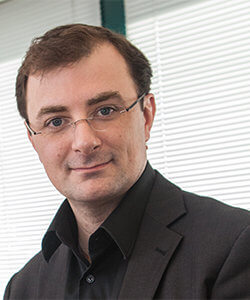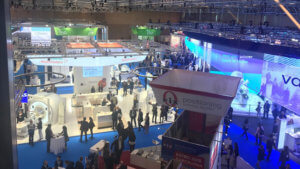The European Society for Radiotherapy and Oncology aims to promote cancer treatment and leave a legacy in destinations where it holds congresses.
With a major European focus, the European Society for Radiotherapy and Oncology (ESTRO) is a non-profit and scientific organisation that promotes the role of radiation oncology to improve patients’ care in the treatment of cancer.
There are more than 7,300 ESTRO members in and outside Europe, meaning the group’s annual congress, which most members attend, is an opportunity to effect significant change.

Alessandro Cortese
ESTRO CEO Alessandro Cortese says that, at the coalface, the association goes city to city and country to country to measure the success rate of cancer treatments, such as radiotherapy (RT).
“There is currently a 69 percent utilization rate of RT across the continent, which means there is a 31 percent gap to close, compared to an optimal utilization. In the last four years, the utilization of RT was measured twice across Europe and showed a raise of 2 percent in the average during the interval. This represents around 15,000 lives saved every year. Closing the gap in Europe would mean saving over 230K lives per year, while globally around 1 million lives could be saved annually.”
The association is committed to disseminating new science to medical practitioners and it helps ensure there is ongoing research so health professionals have what they need to be effective and successful.
ESTRO has established an international reputation for organising events covering all aspects of radiation oncology and the multidisciplinary treatment of cancer. From major conferences with several thousand delegates to meetings for smaller, highly specialised groups, ESTRO events provide a detailed scientific programme with high-level support from experienced conference organisers.
More than 6,000 people attend the ESTRO congress, which offers oncology professionals the chance to share knowledge and advances in the field and it updates medical practitioners on treatment developments. It also enables peer-to-peer networking.
“In terms of oncology treatments, I believe our congress is a good proxy to predict the level of patients’ outcome in a country,” Cortese says. “Doctors that keep being trained and keep updating their knowledge, are more likely to take a role in making sure that the appropriate cancer treatments are available and delivered. Therefore, a correlation in success rates of those doctors who come and those who do not can be expected.”
The annual congresses are held in Vienna, Barcelona, and, every third year, in an open destination.
“When we can, we try and bring the congress to a destination with a strong medical background, but as the event is an expo and a conference, it requires the venues to have at least 14,000sqm and able to seat up to 7,000, so the choice is limited,” Cortese says.
Alternatively, the choice of destination can be based on wanting to improve success rates of radiation oncology treatments, with the aim of using the event’s presence to break down barriers to successful treatments.
“When deciding on potential destinations, we look at where [a location] needs us to increase awareness. Yes, it is the case that we have RFPs and tenders, but it is about vision first. If the destination already has a vision about what we do, then that is a better fit for our event.”

The association has identified four barriers to people receiving the treatment. These are:
Availability of equipment — Depending on the country, this can be inconsistent.
Availability of qualified staff — Radiation oncology is rapidly evolving, so constant training is a significant requirement.
Patient awareness — In some countries, patients’ views about the potential side-effects of receiving treatment cause them to avoid it.
Medical professional awareness — Medical professionals who do not refer patients for radiation oncology for various reasons have created a lack of recognition about its role in cancer treatment.
The proliferation of these barriers differs across Europe.
“By hosting the congress in a destination that shares our values and ambition for cancer treatment, as we will [next year] in Milan at ESTRO 38, we can measure our impact and create a legacy. We involve the local stakeholders in projects and try to understand the barriers to radiation oncology … and improve the knowledge of the local community. Then, when we can go back there, we can really measure the impact legacy of our event.”
In advance of ESTRO 38, the association has formed the National Impact and Legacy Group (NILG). This group represents the belief that ESTRO should leave a legacy in event destinations it visits, helping to improve the awareness and availability of appropriate cancer treatment. The NILG will tackle issues specific to each country, focusing particularly on perceptions that influence the uptake of radiation oncology.
For ESTRO 38, work has already begun and the projects under discussion include messages to be shared on social media, patient empowerment, and engagement with decisionmakers.
ESTRO’s goal is to replicate the NILG model in all countries that host the ESTRO annual congress.

